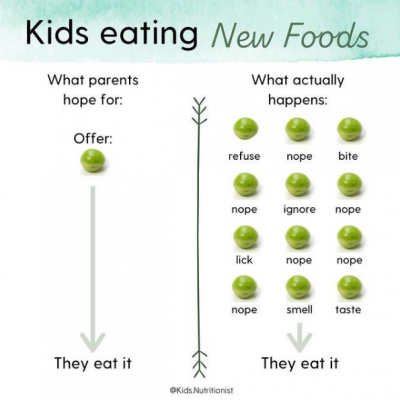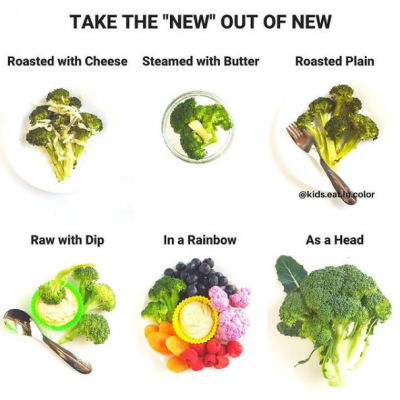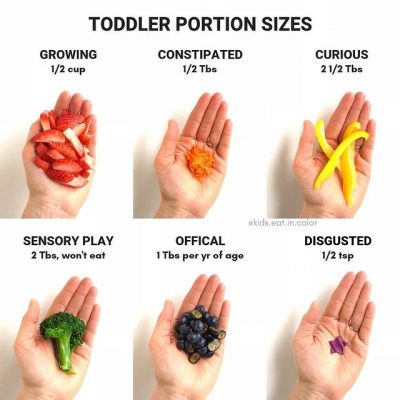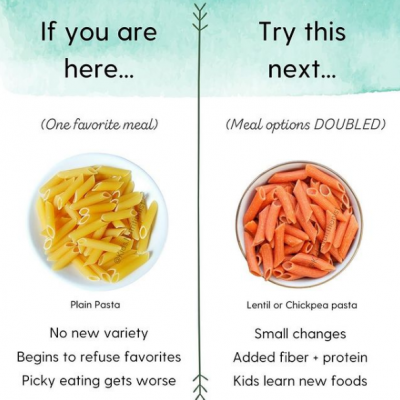Sensitive taste buds make eating an adventure!
Children may initially object to new foods and flavors, and this is in no small part due to their heightened sensitivity to taste! As we age, the number of taste buds we have decreases, resulting in a decreased sensitivity to tastes. Children have about 10,000 taste buds, compared with 5,000 working taste buds in your average adult. Those taste buds sense six different tastes: sweet, umami (or savory), salty, bitter, sour, and fatty.

Humans are naturally reticent about bitter and sour foods, and this can include vegetables. From a young age our bodies instinctively interpret these flavors as a warning sign for potentially poisonous or rotten foods, even though we’ve learned that bitter and sour foods can be incredibly nutrient-dense. You know that the food you are serving is neither poisoned nor rotten, but kids’ taste buds need time to adjust to the reality that this food is perfectly safe and can in fact be delicious – especially because they’re tasting it on a whole other level of intensity.
If at first you don’t succeed…
Did you know it can take more than a dozen exposures to a food before a kid may feel comfortable trying it? Believe it or not, this is totally natural! Like meeting someone for the first time, there can be a period of adjustment that needs to take place. Forcing kids to try foods before they’re ready can backfire and exacerbate picky eating.

Exposures to new foods can come in multiple forms! Whether or not they touched it, ate it, or played make-believe with it, that exposure counts and will add up over time to give your little one a more diverse diet. I know it can be exhausting, but I promise you it will be worth it when the fighting and resistance gives way to familiarity, curiosity, and munching.
Here are some tips for repeat exposures:
- Start with small portion sizes. This is especially helpful if your little one is very reluctant to try something! Smaller portions are less visually overwhelming and stimulating. If they’re hungry for more, they’ll ask. If they don’t eat it, that’s less you have to put back in the fridge or throw out.
- Introduce new foods one at a time. A good rule of thumb is to introduce a new food every two weeks, depending on how quickly your little one adjusts. Make small changes to familiar foods to ease into having more options.
- Try not to use your own opinions or descriptors at first. If you’re worried they might think something smells weird, don’t warn them that you think it smells weird…that just puts them on edge!

- Always serve a “safe food”. For the best chance of success, anytime a new food or “disliked” food is being presented, serve it alongside a “safe food” that your child is already familiar with and will usually eat. It can also be helpful to pair new and familiar foods that have similar flavor profiles. For example, if you’re trying to expose them to carrots, try serving it alongside another sweet and bitter food they accept like oranges or butter lettuce. It takes time, but each exposure will be a little easier for them to handle.
- Let them play with their food! Kids explore the world through their senses and imaginations, so play is a big one here! Try asking questions about what they’re sensing to encourage them to explore – and make sure you play along, too! Here’s an example of guided sensory play: “This is kale. What does it look like to you? What does it feel like when you touch it? What does it smell like? What do you hear when you shake it, brush it, squish it? What does it taste like when you lick it? What does it feel like when you chew it?”

- Garden and shop together. When kids learn to connect the dots between where food comes from and how it gets on their plate, their interest in that food grows. Plus, these are extra opportunities for them to use their senses to familiarize themselves with something they may not be eating yet.
- Expose kids to foods in multiple forms. Raw, cooked, pureed, chopped, whole (ex: pea pod), parts (ex: single pea), hot, cold, sticks, slices, cut into shapes, arranging pieces to make shapes… There are so many little changes we can make to foods, and sometimes one of these is the foot in the door that gets a kid to try it. It’s totally not required to achieve success, but if you’re interested in offering cute or aesthetically pleasing foods to get your kid to take a bite check out Eat the Rainbow – Kids on Instagram.
- Prepare food together! This one might get messy and take a little more time, but it’s a fantastic way to combine an engaging, creative activity with increased food familiarity. We’ll talk more about age-appropriate cooking tasks in a future post!

We love hearing your creative solutions! If you have tips on exposures or success stories that you’d like to share with other Birch families, please send them in!
